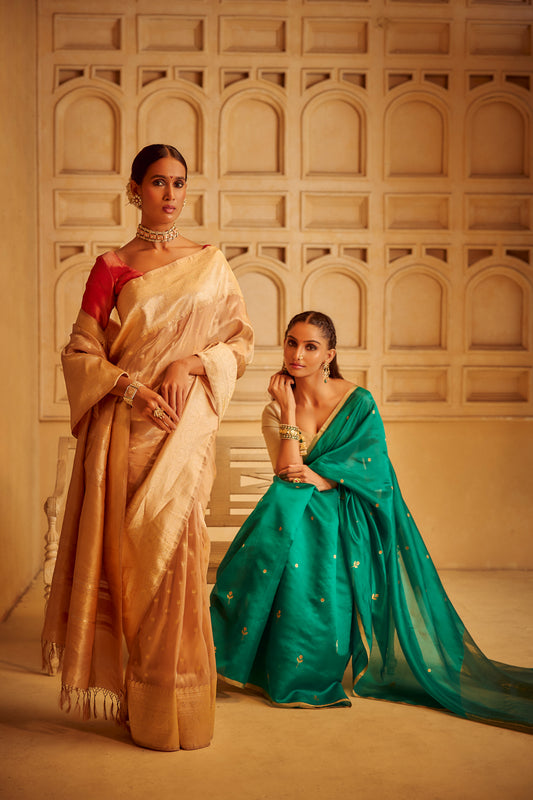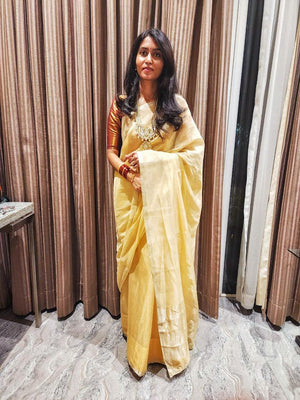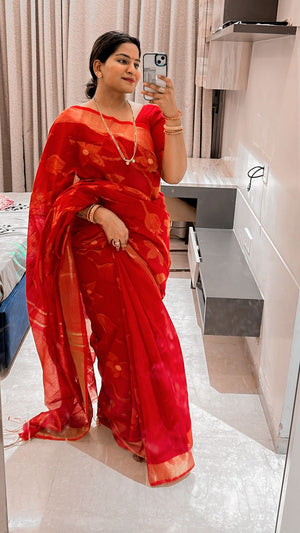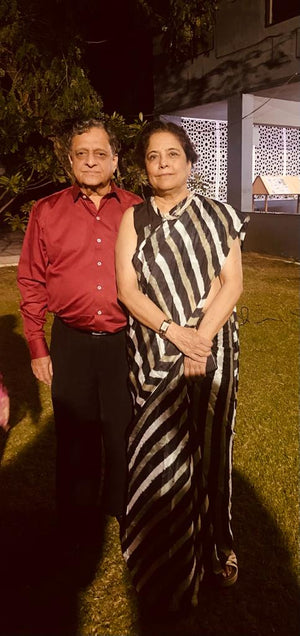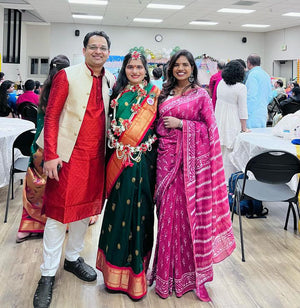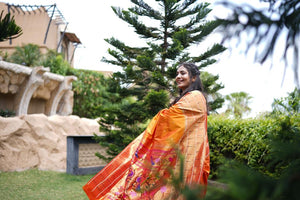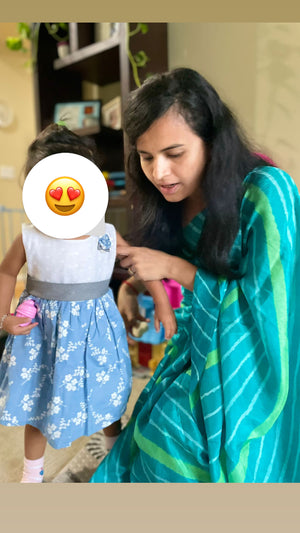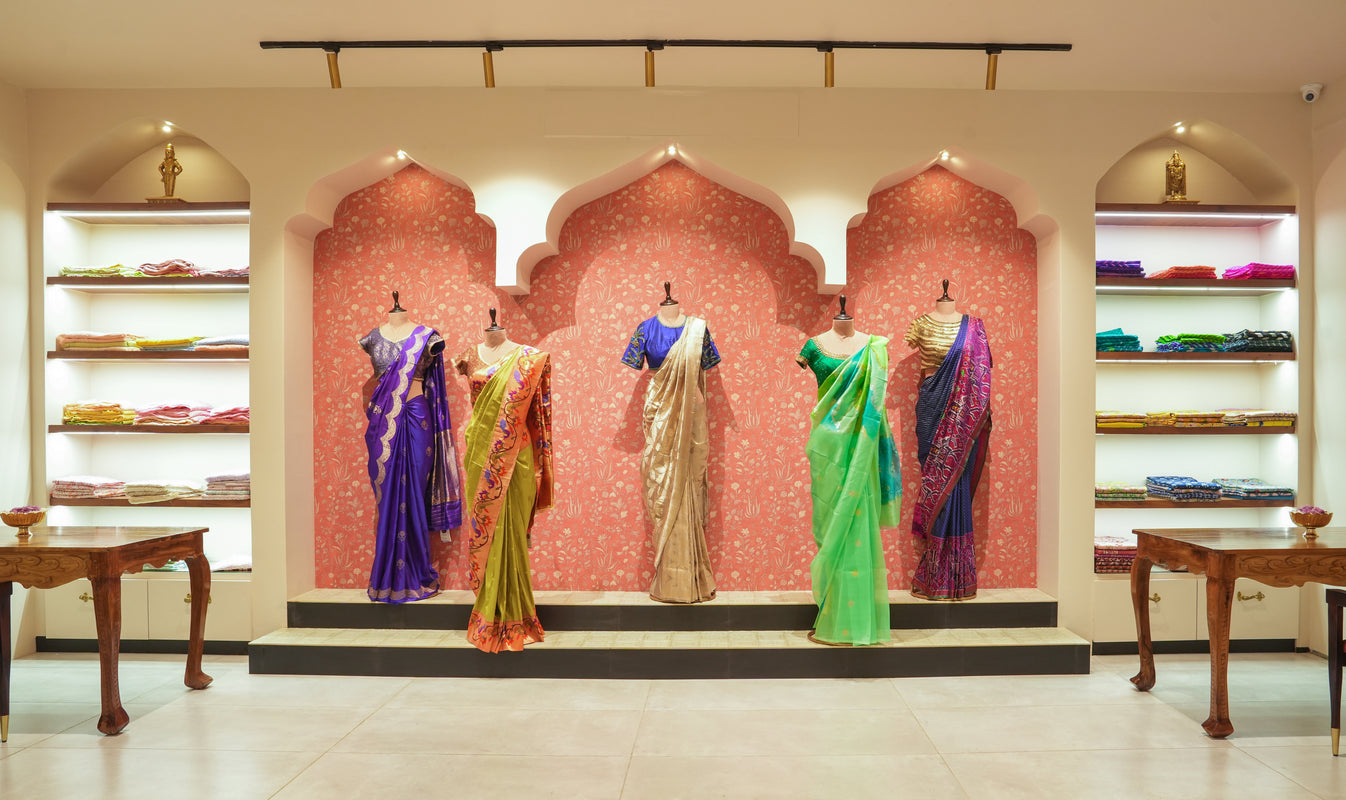Shop
Our looks


new arrivals
Chanderi
bestsellers
hand embroidered masterpieces
chikankari
hand BLOCK PRINTS
Banarasi
Brocade Thaan
IKAT
Najarbattu Anklets
handmade waves of rajasthan
Leheriya
finest real zari bridal sarees
Gold heirlooms
richest brocade of maharashtra
paithanis

Become a part of our inner circle, join
house of vaarasa collectors community
Get exclusive insider details on new arrivals, early access to limited-edition sarees, special offers, and join discussions on handloom textiles and embroideries!
Tales Of Banaras
Banarasi
The very FIRST look of the FIRST piece from our very FIRST COLLECTION.
When I design I fell in love with handwoven silk weaves over and over again. Just a look at fabric with a touch of Banaras is so blissful; the colours and the exquisite weaving pattern gives you a feel of the place; a sense of belonging, a feeling of pride in our heritage. And my heart goes out to karigars who are keeping the art of hand weaving alive despite the temptation of power looms. We need to salute them for their consistent hard work. Acknowledgement can come only when we showcase their work onto the national mainstream in a big way.” This is my take on the beautifully handcrafted and handwoven banarasi silk weaves.
so here’s presenting to you the very first collection..
“Tales of Banaras!!”
PAITHANI
The silk industry in paithan developed atleast 2000-2500 years back.
Paithan finds a mention in the Naradpuran, although the purans may not be an accurate representation of history. Paithan is mentioned in accounts of foreign travelers and merchants. Trade in paithan was heriditary and through the sea. A proof of this are the coins of Satvahans found in Paithan, which bear the symbol of the ship. Raja Hal from the Satavahanas, was patron of the arts and he commissioned a series of poems (Charoli , poems made of 4 lines ) about his capital. Pratishtana from his citizens. From this, a collection of 700 poems known as ‘Gathasaptasati’ or “Gatha Sattasai’ was composed. This ‘Gatha sattasai’ has mentions of the Paithani in it. Some poems mention how the ladies of Rome wait eagerly for the ship to come from Paithan bearing silks. Since the trade was a barter system, Rome traded Lapis Lazuli(semi precious stones), Amphorae of wine and perfumes with Paithan in exchange of silk. An amphora dating to 100 BCE was found in PAithan, completely intact and bearing evidences of wine. Some poems also bear evidences of this. However, paithan bears very few material evidences from before the 2nd century BCE , However alot of material evidences such as manuscripts, monuments, coins and seals are found from the 2nd century BCE onwards. Paithan was prominent in the dynasties of the Sheelahars, Rashtrakutas, Chalukyas, Cholas, Chellas and the PAdyaa but reached its second zenith in the dynasty of the Yadavas of Deogiri. The urban form of paithan today evolved around the 17th century (Shivkalin) and rechead its peak in the Peshwa period. The MAratha and the peshwas were not the ones patronizing the Paithani. It was also patronized by the Mughals, the Nizams, and other royal houses.Letters from the Mughal Emperor demanding cloth from Paithan are available even today with some of the Sahukars. These letters describe intricate details and orders including number of cloth, the motifs on them and even the color combinations and new designs. Since the paithani was so popular and celebrated There are several Ovya (short poems by women) describing and praising the Paithani. These ovya describe the special types of paithani such as kusumbi(chocolate brown) paithani and kalichandra (black) paithani. Paithani were also described as Padamavati in these days although this is contested. One of the ovyas describe a kalichandra from the viewpoint of the common people. ‘Kalichandrakala vajani savvasher, barik hichi kambar, nirya padalya shambhar’ which describes a woman wearing a black paithani weighing 1.5 kg and whose waist is so slender that requires a hundred pleats to drape the paithani. The urban form of Paithan, such as the Targalli, Hatai Mohalla, Chopadegalli, Jargalli evolved in the Peshwa period. Now weavers of paithan have moved to Yeola. There were families with different caste who were involved in different steps of paithani making such as some families used to dye the silk yarn with Natural dyes they were called Rangarhatti, some families sourced silk yarn and zari, some were involved in weaving they were Bunkar. These dyes were organic and natural and prepared from flowers, roots and leaves such as kat, sag, terda etc. Paithani was at its peak at the time of Peshwa period. Sahukar wadas acted as banks for the royal families. Sahukar were facilatators for the Paithanis. They established a trade of paithanis and often commissioned Paithanis for the Marathas, Nizams and Peshwas. The sahukars would pay the weavers the cost of raw materials and certain amount for weaving and then sell Paithanis for profit.
WE BRING YOU CHANDERI WEAVE FROM MADHYAPRADESH
Magic Of Chanderi
Chanderi to me signifies lightweight, sheer sheen, and fine texture. Chanderi textiles are fashioned by interlacing silk, and gold zari in the conventional 100 count cotton yarn, which results in the formation of that lavish, glistening texture. It was once woven to dress royalties of Madhyapradesh. Chanderis are extremely comfortable to wear. You can dress it up and dress it down whenever you want it, which means these definitely have the potential to sustain for longer than ever.
Embroidery Of Royals
Zardozi
Zardozi or Zardosi, a gold embroidery has existed in India since the time of the Rigveda, between 1500 and 1200 BC. It prospered during the 17th century during the reign of the Mughal emperor Akbar, but later a loss of royal patronage and industrialization led to its decline. The craft began to experience a resurgence in popularity following India's independence in 1947.
Today, zardozi is popular in the Indian cities of Lucknow, Farrukhabad, Chennai and Bhopal. In 2013, the Geographical Indication Registry (GIR) accorded Geographical Indication (GI) registration to the Lucknow zardozi. With GI status, zardozi artisans, distributors, and retailers in Lucknow and the six surrounding districts of Barabanki, Unnao, Sitapur, Rae Bareli, Hardoi and Amethi can become authorized users of the "Lucknow Zardozi" brand and carry a unique mark of authenticity.
Dr. Swati Pradhan in House of Vaarasa Chanderi Tissue Silk Saree
Totally love the red jamdani, very happy with the service. - Prajakta M., Mumbai
The Saree is extreamly soft and comfortable, great gift for my MIL. Thank You. - Dr. Swati Pradhan, Solapur
Wore your Saree, earrings & nose pin! Thanks!! - Deepika K, San Jose
Hi Pooja, I picked up the Paithani. So exquisite, It is very beautiful. - Prachi D. , Pune
Saree 😍😍.. super soft, loved the feel. I was comfortable even with a toddler around!! - Shilpa N, Seattle





